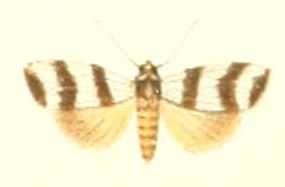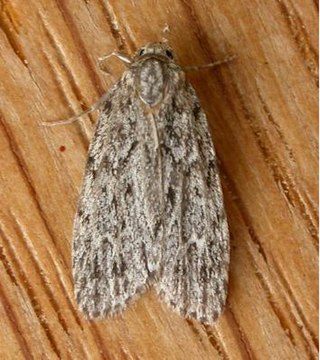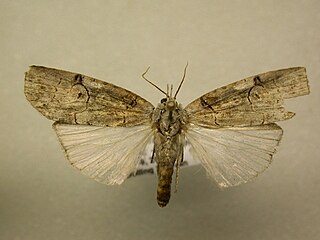
Hypena is a genus of moths in the family Erebidae. It was first described by Franz von Paula Schrank in 1802. These non-migratory moths overwinter as pupae and almost never estivate as adults.

Agylla, also formerly known as Churinga, is a genus of moths in the subfamily Arctiinae. The genus was erected by Francis Walker in 1854.

Asura is a genus of moths in the subfamily Arctiinae, and subtribe Nudariina erected by Francis Walker in 1854.

Belemnia is a genus of moths in the subfamily Arctiinae. The genus was erected by Francis Walker in 1854. Species are found in Central and South America.

Cyana is a genus of moths in the family Erebidae. Species are well distributed in Africa, Madagascar, China, India, Sri Lanka, Myanmar, Sumatra, Java and Borneo. The genus was erected by Francis Walker in 1854.
Cyme is a genus of moths in the family Erebidae. The genus was described by Felder in 1861.

Eutane is a genus of moths in the subfamily Arctiinae. The genus was erected by Francis Walker in 1854.

Halone is a genus of moths in the subfamily Arctiinae from southern Asia and Australia. The genus was erected by Francis Walker in 1854.
Heliosia is a genus of moths in the family Erebidae erected by George Hampson in 1900.
Macrosia is a genus of moths in the subfamily Arctiinae. The genus was erected by George Hampson in 1900.

Miltochrista is a genus of moths of the family Erebidae, subfamily Arctiinae. The genus was erected by Jacob Hübner in 1819.

Nudaria is a genus of moths in the subfamily Arctiinae erected by Adrian Hardy Haworth in 1809.

Palaeosia is a monotypic moth genus in the family Erebidae erected by George Hampson in 1900. Its only species, Palaeosia bicosta, the two-ribbed arctiid or two-ribbed footman, was first described by Francis Walker in 1854. It is found in south-eastern Australia.
Siccia is a genus of moths in the family Erebidae. The genus was erected by Francis Walker in 1854.

Sphecosoma is a genus of wasp moths, or wasp-mimicking moths, in the subfamily Arctiinae. They are found mainly in Mexico, Central America, and South America.

Pycnarmon is a genus of moths of the family Crambidae described by Julius Lederer in 1863.

Iscadia is a genus of moths of the family Nolidae. The genus was erected by Francis Walker in 1857.
Castulo plagiata, the yellow-banded footman, is a moth of the subfamily Arctiinae. The species was first described by Francis Walker in 1854. It is found in the Australian states of New South Wales, Victoria and Tasmania.

Ilemodes heterogyna, the broad buttered footman, is a moth of the family Erebidae. The species was first described by George Hampson in 1900. It is found in Malawi, South Africa, Uganda, Ethiopia and Kenya.












